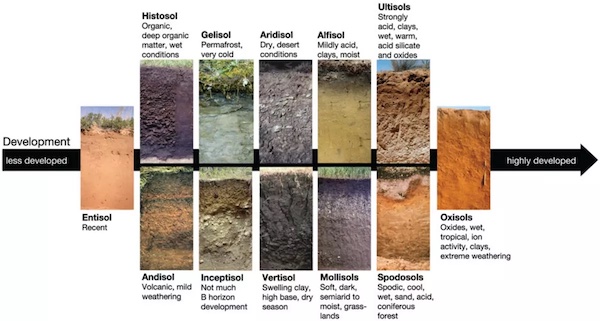Soil is arguably one of the most important parts of our planet’s ecosystem and critical for human survival. Without it, there would be no farmers as there would literally be no ground to sow. In order to raise awareness about the significance of soil as a vital resource, the United Nations in 2013 designated December 5 as “World Soil Day.” It has since become an annual event to promote soil conservation and sustainable land management.
The theme for World Soil Day 2023 – Soil and water, a source of life – specifically aims to highlight the important relationship between soil and water in achieving sustainable and resilient agrifood systems. Over 95% of our food originates from these two fundamental resources. Soil water, vital for nutrient absorption by plants, binds our ecosystems together and the symbiotic relationship is the foundation of our agricultural systems. You can learn more at FAO HERE.
In recognition of soil and the important role it plays in our lives and livelihoods, here are some interesting facts about the ground below our feet:
Not Dirt – One of the most fundamental things to know about soil is that it is not dirt. Dirt is an inorganic material made from broken-down rocks that primarily consists of minerals like iron, calcium and magnesium. Soil, on the other hand, is dirt + water, air and organic material.
Six Different Layers – Healthy soils have six different layers (known as horizons) – beginning with top and organic matter (like plant and animal residues), and ending with bedrock. Soil is the living layer between the atmosphere and bedrock.
Only a Very Small Portion Can Grow Food – Only about 7.5% of the Earth’s surface consists of the agricultural soil on which food can be grown. This fragment competes with humankind’s other needs and wants, ranging from housing to entertainment, industrial and military complexes to landfill sites.
Home to More than Half of Earth’s Species – It is estimated that more than half of all earth species live in the soil. In fact, just a teaspoon of soil can contain up to 10 billion organisms, more than the number of people on the planet. Only about 1% of the microorganisms found in soil have been identified so far, making our soils one of the largest reservoirs of microbial diversity on Earth. These include many single-celled organisms, such as bacteria and archaea, as well as certain fungi too.
70,000 Different Types – There are some 70,000 different types of soil in the US alone. Soil types are generally classified based on how much sand, silt and clay can be found in them. Soil type and quality vary a lot based on location and climate.
Critical for Human Survival – Soils support 95% of all food production on earth. Healthy soils supply 15 of the 18 naturally occurring chemical elements essential to plants. And we and other animals ultimately rely on plants for food, as well as medicines, fibers, and an untold number of other materials.
Major Health Benefits – While plants provide important remedies, you may be surprised to learn that most of our antibiotics come from soil, or more specifically, microorganisms found in the soil. The development of penicillin, which is produced by a fungus, along with streptomycin, chloramphenicol, and tetracycline, all originated from soil bacteria.
Carbon Capturing – Soils store more carbon – some 2500 gigatons – than the atmosphere, and all of the world’s plants and forests combined. Only the ocean has a larger carbon store.
Water Filtration – Soil is Earth’s natural water filtration system. Surface water trickles down through the various soil layers where it is filtered of chemicals, dust and other contaminants in the process. In this way, by the time it reaches and collects in underground aquifers, the water is pure. Soil can also store enormous amounts of water, which can help to both prevent floods and mitigate the effects of drought. This is largely thanks to the organic matter found in soil. In fact, the United States Department of Agriculture Natural Resources Conservation Service (NRCS) found that a mere 1% of organic matter in the top 6 inches of soil could hold as much as 27,000 gallons of water per acre.
Need to Stop Losing It – Healthy topsoil is vital to our existence on this planet, but we are losing it at an alarming rate – between 10 and 40 times faster than it’s formed. What’s more, some 33% of the Earth’s soils, and more than half of agricultural soils, are degraded. Archaeologists believe that the collapse of some ancient civilizations – including that of Harappa in the Indus Valley, and the Mayans in Central America – was a direct result of mismanagement of their soils. It takes more than 1,000 years to grow 1 centimeter (.393 inches) of soil. Soil is formed through a geological process that slowly transforms bedrock into the living matrix we know as soil. The whole process can take tens of thousands of years. For this reason, soil is seen as a ‘non-renewable’ resource.










